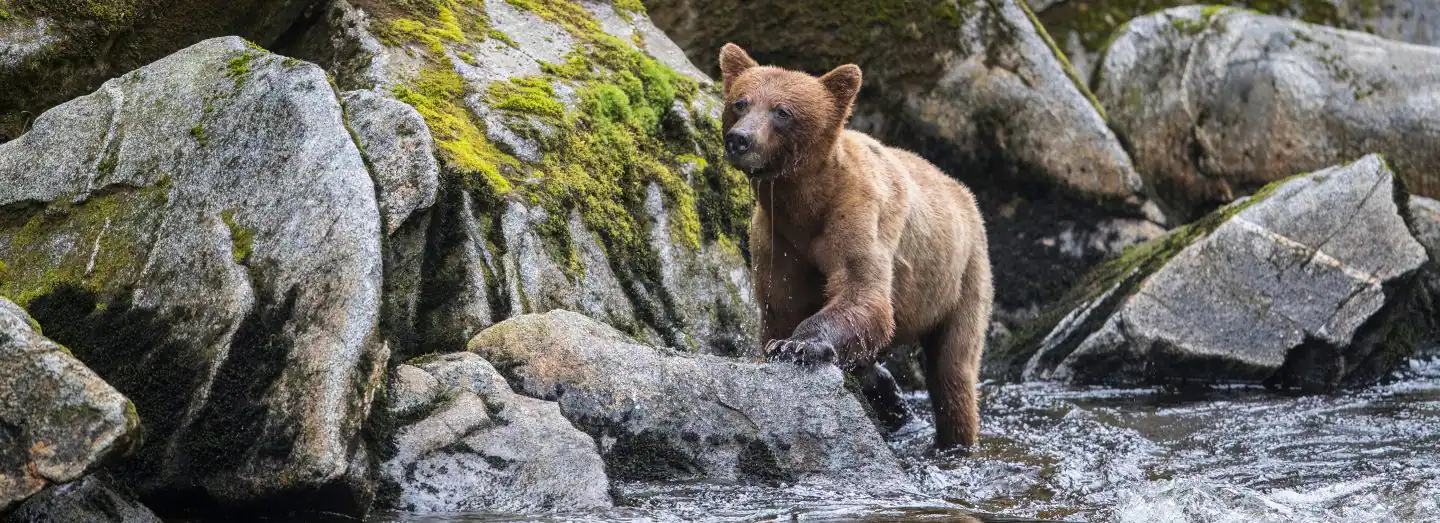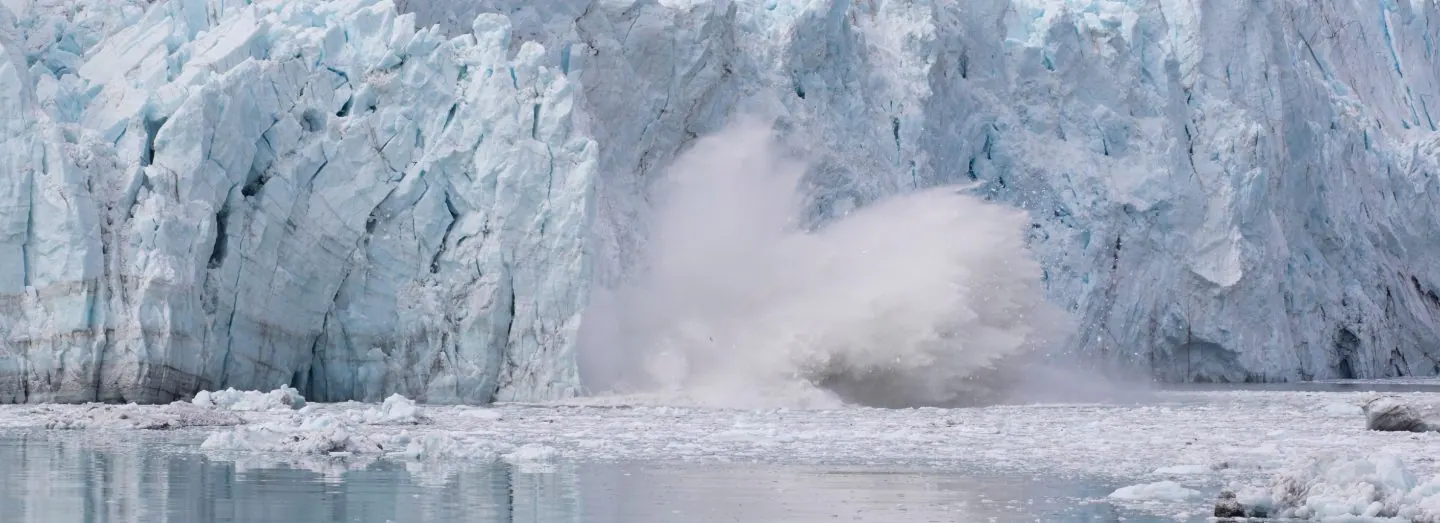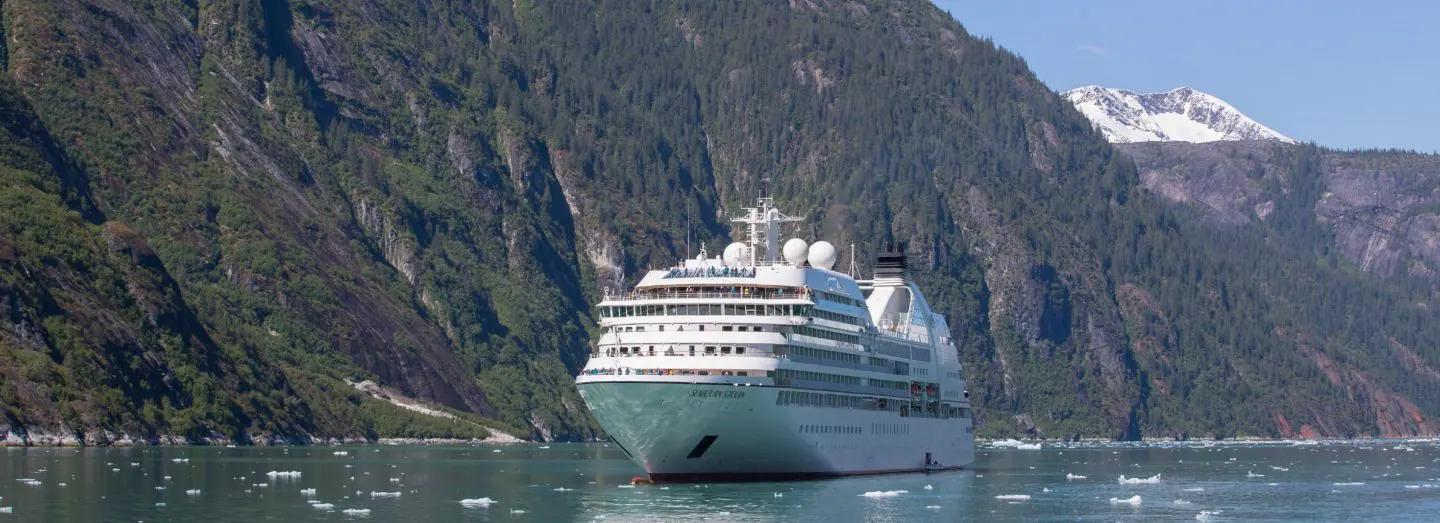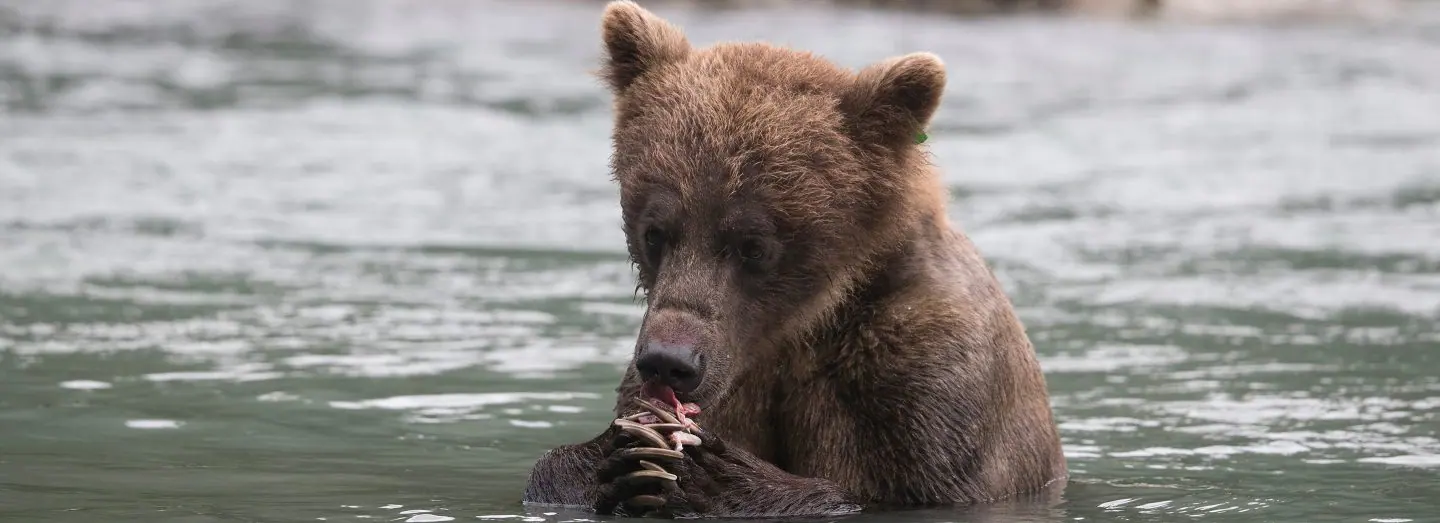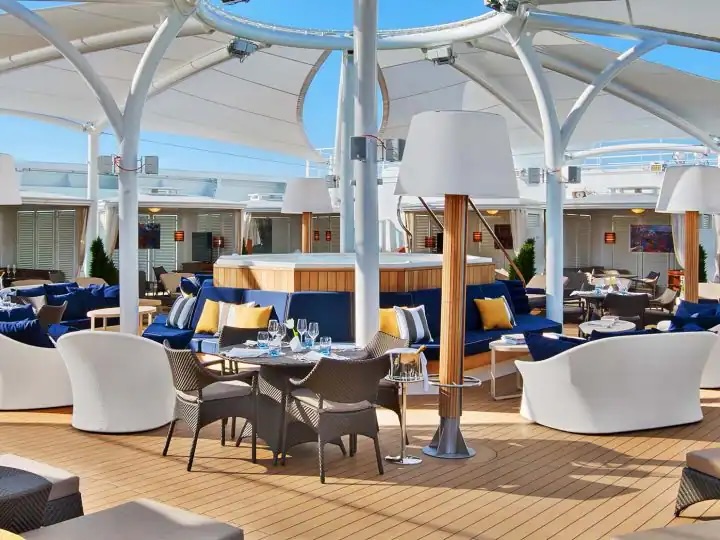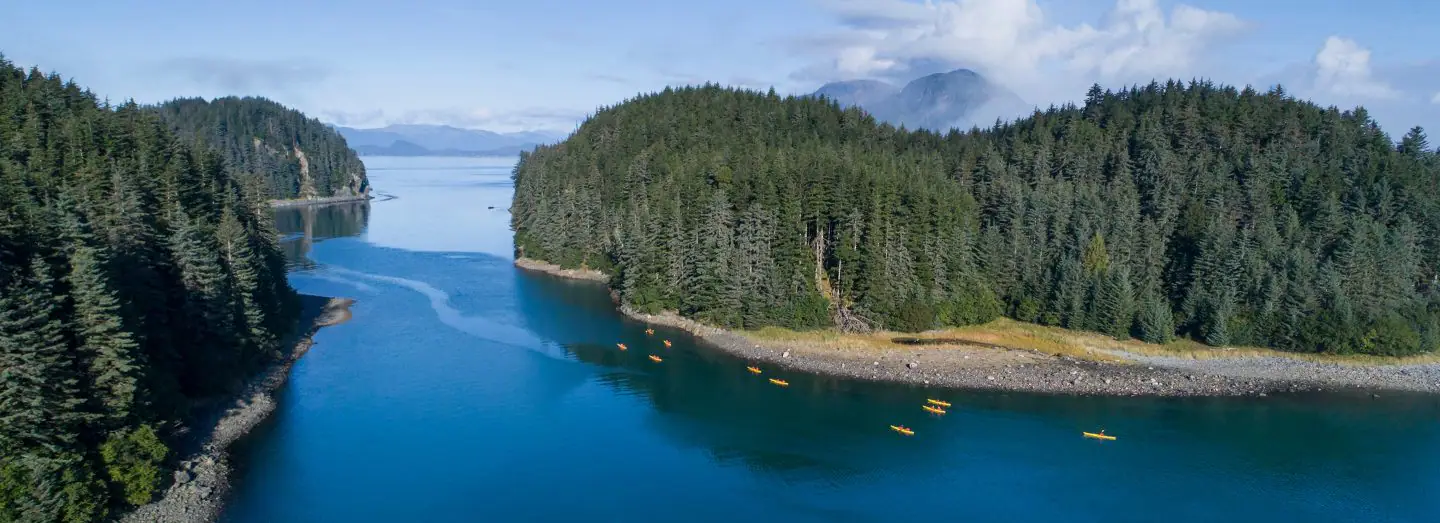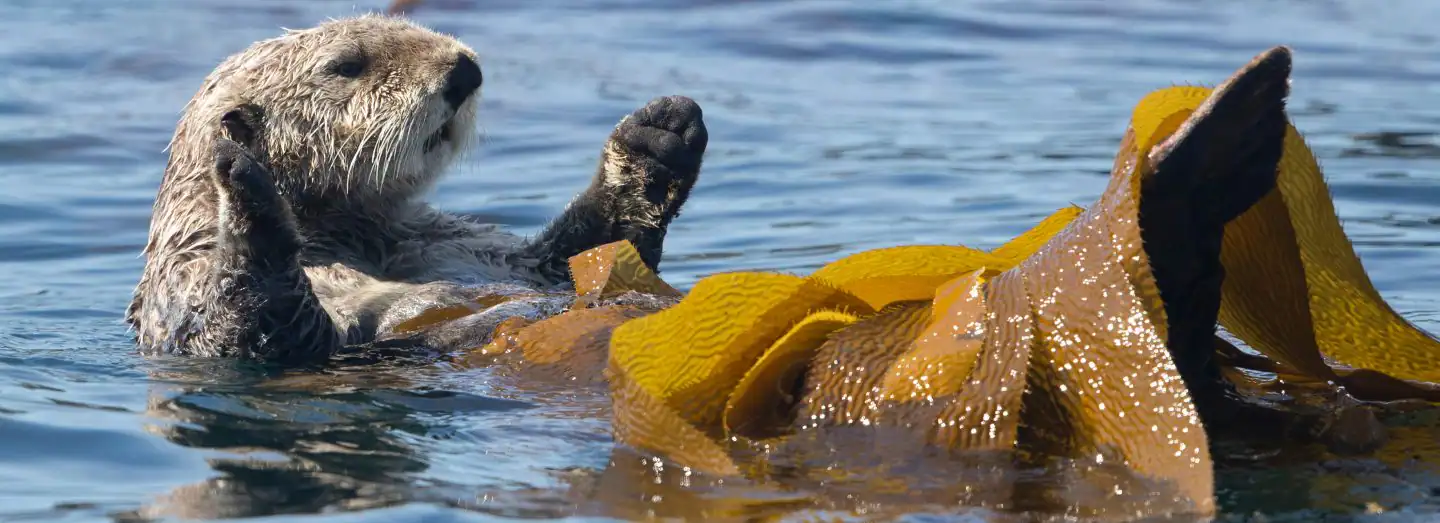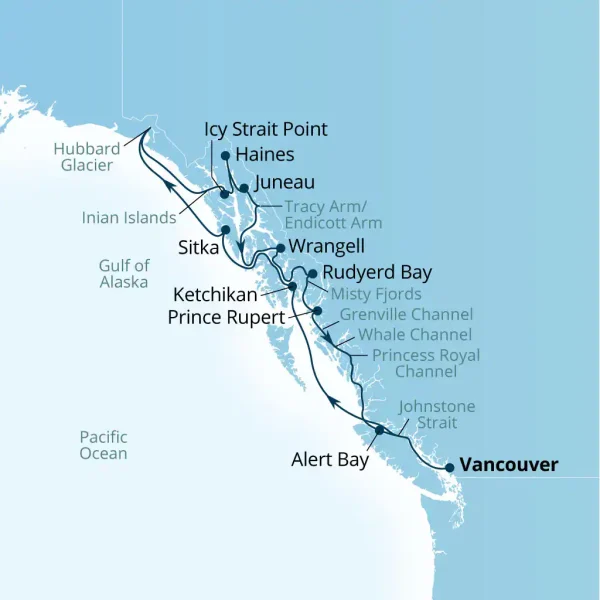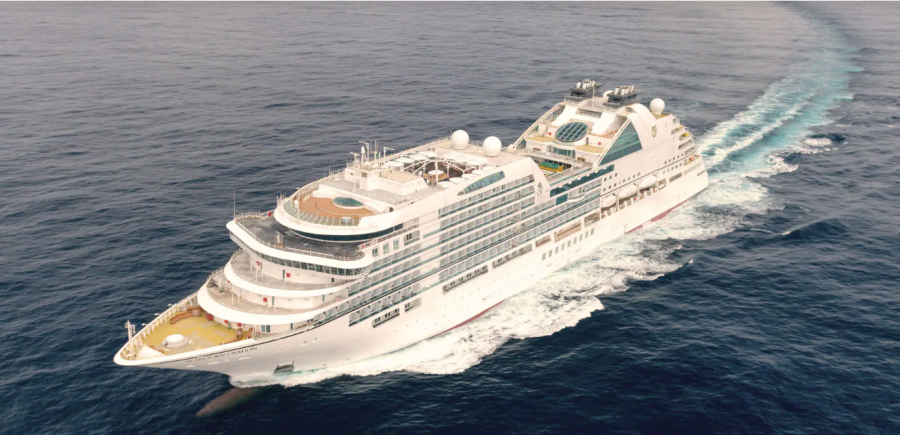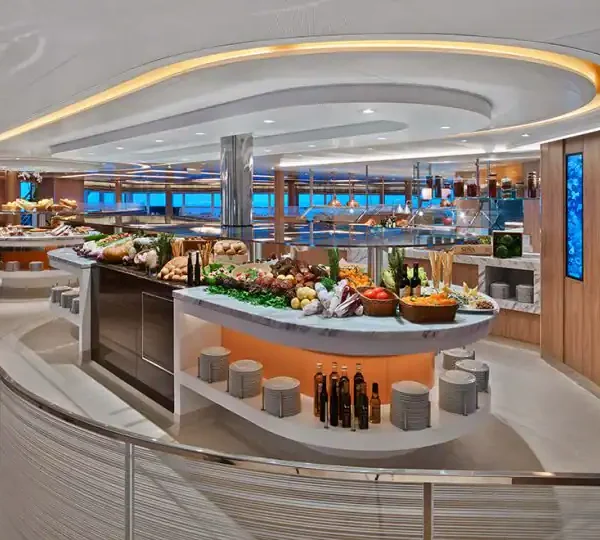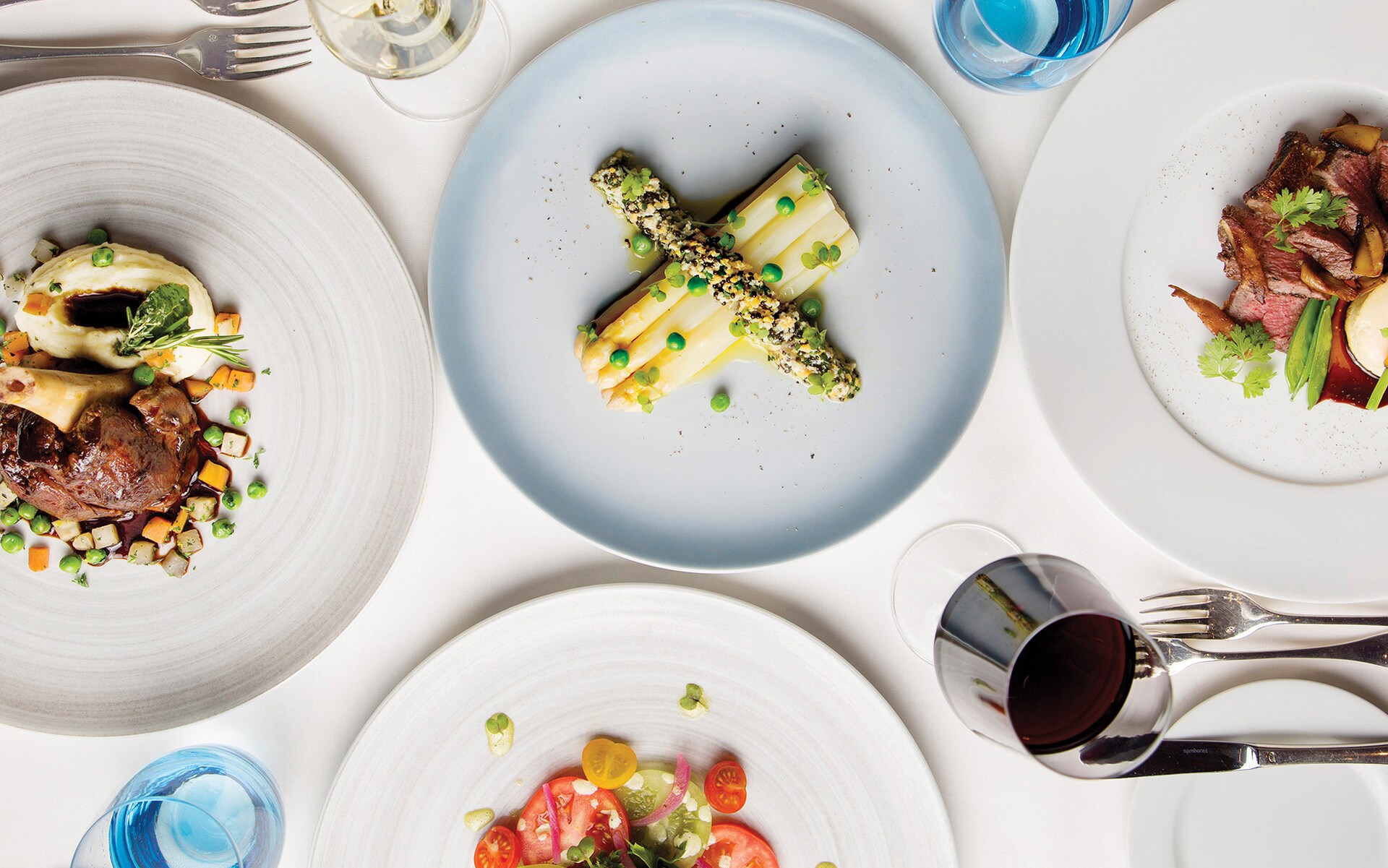DAY 0 – VANCOUVER, CANADA
Vancouver is a city blessed with unparalleled natural beauty. Surrounded by mountains and water, the cityscape is a stunning juxtaposition of modern architecture against a backdrop of majestic peaks and the Pacific Ocean. Stanley Park, an urban oasis, offers a haven of lush forests, seawalls, and beaches, providing a perfect escape into nature without leaving the city. From skiing and snowboarding in the nearby mountains during the winter to hiking, biking, and kayaking in the warmer months, outdoor enthusiasts will find a paradise here.
DAY 1 – CRUISING THE QUEEN CHARLOTTE SOUND
The Queen Charlotte Sound lies between the Queen Charlotte Strait, which winds between Vancouver Island and the British Columbia mainland in the south, and Hecate Strait, which is northward, adjacent to the Haida Gwaii Islands off the Pacific coast of British Columbia. It is a broad reach in the long shipping route called the Inside Passage threading the myriad islands stretching from Washington’s Puget Sound to Alaska.
DAY 2 – KETCHIKAN, ALASKA & CRUISING SNOW PASS / DECISION PASSAGE
Ketchikan is a picturesque coastal town with a colorful frontier history, standing at the southern entrance to Alaska’s famed Inside Passage. It began as a salmon cannery in 1885, built by company employee Mike Martin at the mouth of Ketchikan Creek. Once dubbed the ‘Canned Salmon Capital of the World,’ today government, commercial fishing, and tourism are its main industries. The renowned Creek Street, perched on stilts along the mouth of the creek, would bring lasting infamy to the area for the red-light district that burgeoned there during the Gold Rush.
DAY 3 – SITKA, ALASKA
Story and soul await in the history and lush scenery of this remote city on Baranof Island. As the oldest city in Alaska, only accessible by air and sea, Sitka is the perfect place to relish in unbridled beauty of the Last Frontier. Nicknamed the ‘Paris of the Pacific’ for the growing wealth acquired during its logging, gold, and fur trade booms, Sitka was sold to the United States by Russia in 1867. Picturesque remnants of Russia’s architectural influence are still present; one of the most intriguing structures is the Cathedral of Saint Michael, built in 1848 to honor a Russian Orthodox bishop.
DAY 4 – CRUISING YAKUTAT BAY & HUBBARD GLACIER, ALASKA
Hubbard Glacier is the largest tidewater glacier in North America, a massive ice mass stretching 76 miles long and 1,200 feet deep. It’s known for its rapid advance, nicknamed the “Galloping Glacier,” and the frequent calving of large icebergs into the sea. The glacier’s terminus, where it meets Disenchantment Bay, is also known for its dramatic calving events, with ice chunks sometimes as tall as a 10-story building crashing into the bay.
DAY 5 – ICY STRAIT POINT, ALASKA
Icy Strait Point is a unique community on Chichagof Island near the entry to Glacier Bay National Park. It was created and is owned by a corporation of over 1300 Native Americans of various local Tlingit tribes, for the purpose of offering visitors an enjoyable, educational experience of Alaska’s native cultures, as well as the human and natural history of the region.
DAY 6 – HAINES, ALASKA
Tucked in along the shores of the longest fjord in North America and surrounded by breathtaking scenery, Haines is an authentic Alaskan experience. It is an eclectic community and a truly hidden gem. Its rich culture shines brightly during the annual state fair that draws people from all over Alaska.
DAY 7 – JUNEAU, ALASKA
Juneau, Alaska’s capital, is accessible only by air and sea, due to the rugged mountain terrain that surrounds the city. It has been a world-class travel destination since the early 1900’s. The city has plenty to offer the outdoor adventurer. You may choose to explore on foot along the Perseverance Trail or around Mendenhall Glacier, or board one of the many local whale-watching boats, or view the mountains and extensive glaciers of the Juneau Icefield from a helicopter.
DAY 8 – TRACY ARM OR ENDICOTT ARM, ALASKA
A short distance south from Alaska’s capital of Juneau, where Holkham Bay cuts into the coastline under a dramatic back-drop of high snow-capped peaks and the verdant Tongass National Forest, lies the entrance to Tracy Arm-Fords Terror Wilderness.
From Holkam Bay, the waterway is bisected into Tracy Arm to the north and Endicott Arm to the south. Each arm terminates at a stunning blue river of ice: North and South Sawyer glaciers in Tracy Arm and Dawes glacier in Endicott Arm. It is hard to imagine that thousands of years ago these now-distant glaciers joined in Holkham Bay, more than thirty miles from their present locations. Extremely active, the glaciers calve frequently, filling their fjords with icebergs, some three stories in height.
DAY 9 – WRANGELL, ALASKA
One of the thousands of islands of the Alexander Archipelago, Wrangell Island sits at the heart of the Tongass National Rain Forest and receives approximately 80” (203 cm) of rain per year. The city of Wrangell, a true Alaskan frontier town, sits at the northern end of the island, a short distance from the mouth of the mighty Stikine River. The history of Wrangell is deeply rooted in the Tlingit people, the fur trade and the gold rush. The Stikine River trade route brought the Tlingit people here thousands of years ago, evidenced by some forty petroglyphs at Petroglyph Beach State Historic Site and Totem Park.
DAY 10 – RUDYERD BAY, ALASKA
Scottish-American naturalist John Muir compared the 2,294,343-acre (930,000 hectare) Misty Fjords National Monument to his favorite place in America, Yosemite National Park. Often shrouded in mist, Misty Fjords is a true wilderness. Its vertical granite cliffs, which reach 3,000’ (900 m) above sea level, descend another 1,000’ (300 m) below the water’s surface. Mountain goats, brown and black bears, coastal wolves, sea lions, bald eagles, ravens, Dall’s porpoises, orca and humpback whales can be spotted along its shorelines and throughout its waters.
DAY 11 – PRINCE RUPERT, CANADA
Prince Rupert, set amongst the coastal mountains, is the jumping-off point for travelers joining the coastal ferries to Haida Gwaii, Vancouver or north to Alaska. Highlights include the quaint Cow Bay with its shops and restaurants, the Museum of Northern British Columbia, the totem carving house or the stunning sunken gardens. Prince Rupert certainly has abundant wildlife. The region is home to the highest concentration of grizzly bears in North America. The Khutzeymateen Grizzly Bear Sanctuary, established in 1994, was the first area in Canada to be protected specifically for grizzlies and their habitat.
DAY 12 – SCENIC CRUISING – WHALE CHANNEL / PRINCESS ROYAL CHANNEL
Whale Channel is a picturesque waterway separating Gil Island from Princess Royal Island in British Columbia’s Inside Passage. Surrounded by snow-capped mountain ranges and teeming with marine life, It is a diversion from the main shipping lane, located roughly halfway between Prince Rupert and the First Nations village of Klemtu.
DAY 13 – ALERT BAY, CANADA
Located on the now-dormant Alert Bay volcanic belt, Cormorant Island is host to Vancouver Island’s oldest northern community, the small town of Alert Bay. It is located in the traditional territory of the Kwakwaka’wakw First Nation and today is a blend of both aboriginal and pioneer culture.
DAY 14 – VANCOUVER, CANADA
Vancouver is a city blessed with unparalleled natural beauty. Surrounded by mountains and water, the cityscape is a stunning juxtaposition of modern architecture against a backdrop of majestic peaks and the Pacific Ocean. Stanley Park, an urban oasis, offers a haven of lush forests, seawalls, and beaches, providing a perfect escape into nature without leaving the city. From skiing and snowboarding in the nearby mountains during the winter to hiking, biking, and kayaking in the warmer months, outdoor enthusiasts will find a paradise here.


